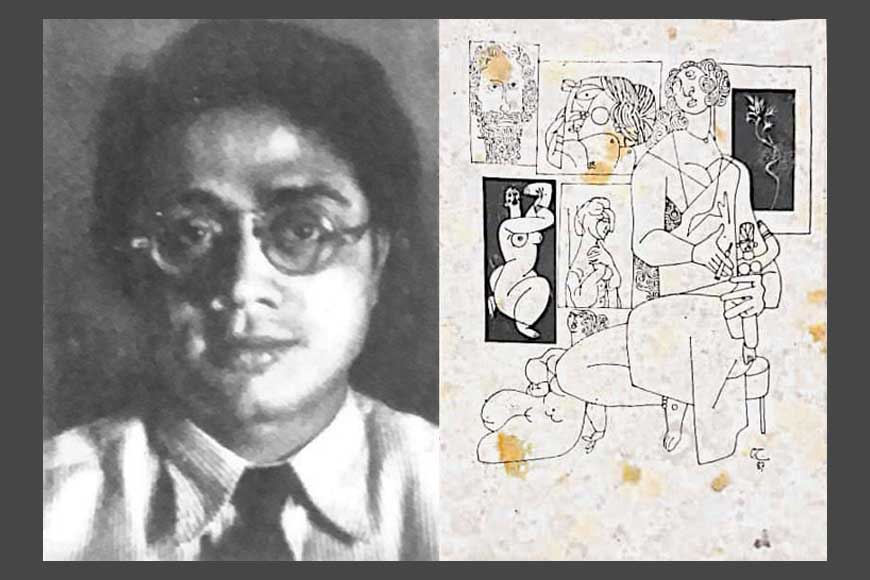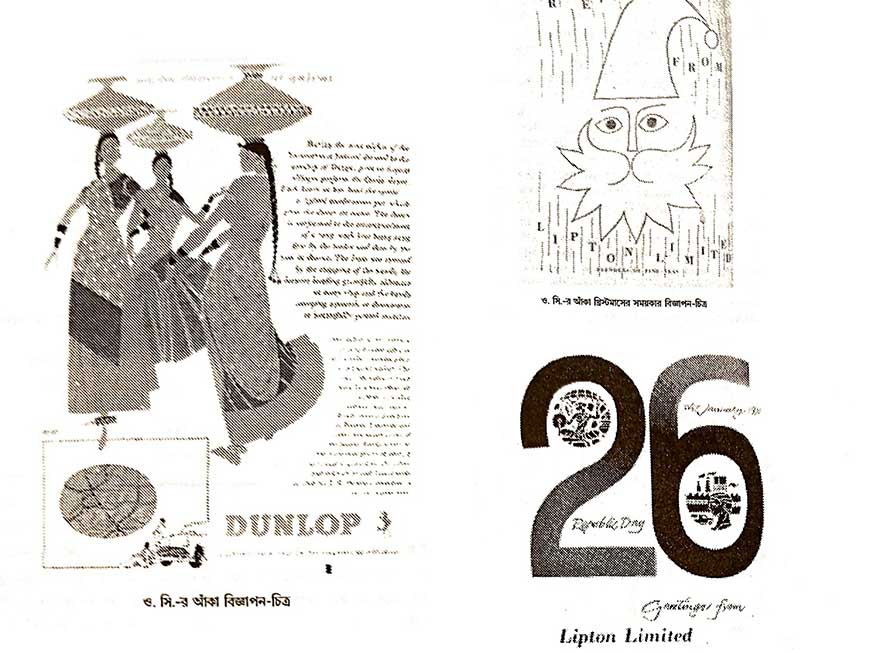Adman O.C. Ganguly – The ‘Trendsetter’ Indian ad-guru of the 1940’

Every artist has his/her own style of expression but there are gifted ones whose signature styles set them apart from the hoi polloi and one such virtuoso was Ordhendra Coomar Gangopadhyay aka ‘O.C. Ganguly’, who is renowned simply as ‘OC’ in the world of advertisement. His fame is not restricted within this country alone, rather he is a revered international ad guru. Specimen of his creative designs has been designated permanent slots in international publications. Not just advertisements, his vast array of work include graphics, fine art, cinema et al and in all these fields he left his mark. As recognition of his excellence in the sphere of creativity, he was awarded the prestigious President’s Medal eight times. His works are highly rated in the international art world and considered at par with modern trend-setters, including Picasso, Braque, or Chagall. It is a pity that despite his immense contribution as an international artist, his fame remains confined within the realm of advertisement world. For a majority of Indians and Bengalis, OC is a forgotten entity on the year of his birth centenary.
Two illustrated commercials created by him for Dunlop and Lipton’s Tea in the 1940s was a watershed in the history of Indian advertisement. In these two campaigns, OC introduced Indian graphics for the first time, that were impacted by his Abanindranath Tagore and Jamini Roy.
People brag about Kolkata being the cultural capital of the country but there is hardly any effort to introduce him to the masses or discuss about this immensely powerful artist and his works. He was born on August 16, 1920 and was neither formally trained in art from at any institution nor did he have any professional degree in art. He was an extremely active child who loved to play outdoors. At an age when children are attracted to painting and dabble with colours, OC would be busy either playing football or else shoving glass bottles on the tram tracks so that the trams would run over the bottles, grind them to powder and OC could put the powder over the entire length of his kite string and strengthen it. Even after he became famous as an artist, he continued playing football and played in the Manindra Memorial Shield Final game.

OC’s elder sibling, Bhagaban Ganguly was an artist. He cleared his entrance examination and took admission in art school. OC too, took the exam but failed to clear it and came back home without attempting to take the test again. Bhagaban Ganguly visited Nandalal Bose who, at that time, lived in the house of monk Gagen Maharaj, to learn the finer nuances of art. OC accompanied him regularly but he was not interested in art then. But those visits and Bose’s teachings did have their effects on him and helped him put his mind on track that he was destined to follow in the future. He also came in contact with Abanindranath Tagore and learnt the techniques of paintings from him.
Two illustrated commercials created by him for Dunlop and Lipton’s Tea in the 1940s was a watershed in the history of Indian advertisement. In these two campaigns, OC introduced Indian graphics for the first time, that were impacted by his Abanindranath Tagore and Jamini Roy. OC started his professional career in 1937 with Stronach Advertising, where he was assigned to assemble clippings from different papers and prepare and send design portfolios to clients. His salary was Rs 40 per month. However, after a month, his employers did not like his performance and gave him marching orders. In 1939 art director Samar Dey at Stronach Advertising requested his bosses to reinstate OC and they complied. This time his work entailed assembling artwork but as luck would have it the World War started in 1941 and the ad company closed for good and OC was rendered jobless once again.
Prior to joining Keemer, OC’s professional life was confined to cutting, pasting and assembling printed advertising material for clients for months on end. This monotonous and mindless job had impacted him and his morale was at an all-time low. Things took a dramatic turn in 1945 when Satyajit Ray joined the organization. The duo hit it off right away. They discussed art and exchanged ideas during free time and soon they became intimate friends.
Meanwhile, Judhajit Chakraborty and Barin Ghosh, two ex-employees of Stronach Advertising, jointly launched Service Advertising and hired OC. It was during this time that artist Annada Munshi came across a book cover designed by OC that was on display at the Art in Industry exhibition. He was immensely impressed and took OC to Peter Broom, manager at D.J Keemer Advertising Agency, requesting him to hire the young man. OC started his new innings with D.J. Keemer after working at Service Advertising for a day!
Prior to joining Keemer, OC’s professional life was confined to cutting, pasting and assembling printed advertising material for clients for months on end. This monotonous and mindless job had impacted him and his morale was at an all-time low. Things took a dramatic turn in 1945 when Satyajit Ray joined the organization. The duo hit it off right away. They discussed art and exchanged ideas during free time and soon they became intimate friends. OC found a new zeal and his creative sparks were ignited and he designed some of the cult advertisement campaigns during this phase. OC felt a need to explore newer avenues in the realm of technique and application and include indigenous material in the visual domain. One such work that stood out was an illustration he did for His Masters’ Voice (HMV) Durga Puja special release of albums. It was an idyllic scene from a village --- fluffy cottony clouds floating in an azure autumnal sky, a boat is floating leisurely in the river at a distance and young girls are crowding under a Sheuli tree (coral jasmine flower that blooms in autumn), collecting flowers.
He moved up the ladder to become the art director of Press Syndicate Advertising Company. He was the paper-setter and examiner of Commercial Art at Patna Art School. He directed a film based on Santosh Kumar Ghosh’s novel, Kinu Gowalar Goli. He is famous for using crow-quill pens deftly. His illustrations are autobiographical in nature. His works reflected his keen observation, innovativeness, form and balance. He is regarded as a pioneer in the world of modern Indian advertisement. In fact, his immense talent as an artist has been overshadowed by his professional success and fame. Renowned artist Raghunath Goswami had once said that most artists grope in the dark and struggle for years to discover their individual style and expression but OC never had to go through this long and arduous process. It came to him very naturally.

-Scheme-during-Rabi-2025-26--Agriculture.jpg)









